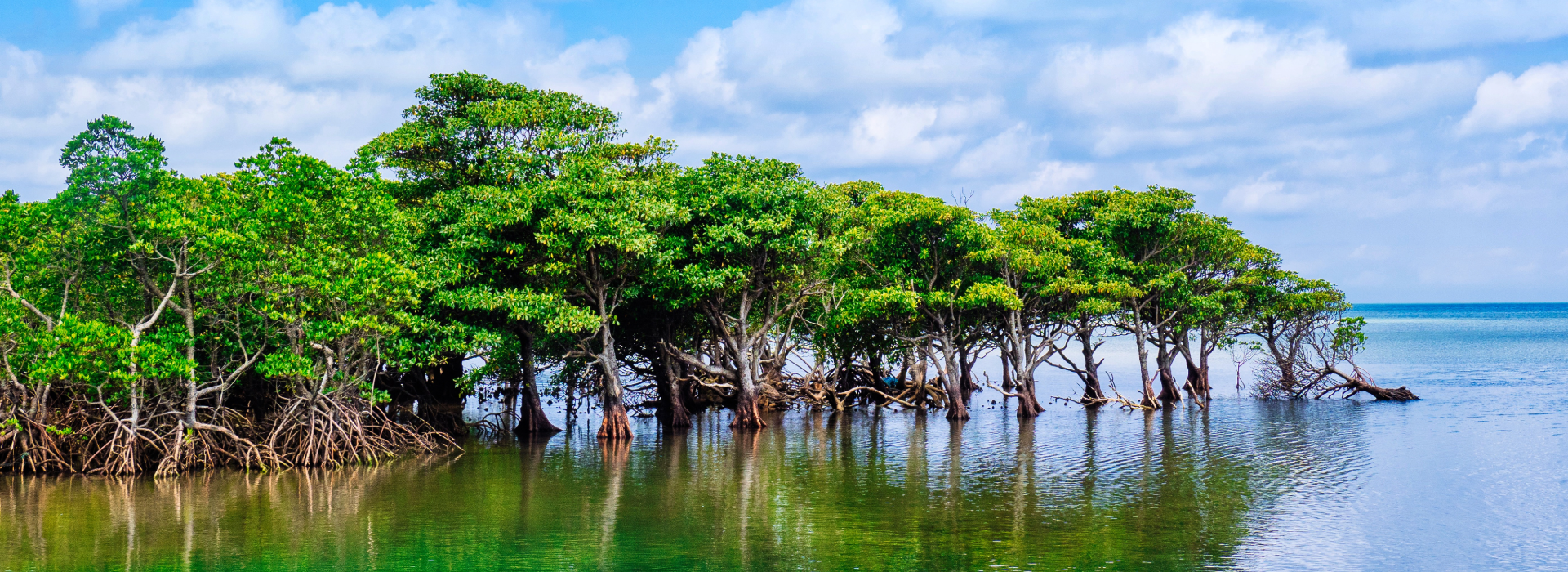

Sponsorship mangroves
Mangroves are trees and shrubs adapted to tropical coasts and river mouths that grow in brackish water and form a unique ecosystem. They are characterized by specialized root systems that anchor them in the muddy ground and enable them to absorb oxygen from the air. The «rainforests of the seas» are essential for coastal protection, store large amounts of carbon, serve as nurseries for many animal species, and are unique due to their special adaptability to salt water and tides.
With your annual contribution of CHF 290, you will enable the reforestation of around 50m² of mangrove forest in Central Java, thereby contributing not only to the preservation of this unique but endangered ecosystem, but also to climate protection.
If you pay the sponsorship contribution by bank transfer or payment slip, please enter “Mangrove sponsorship” as the payment reference.
Mangroves facts
- The term «mangrove» does not refer to a single species, but rather to an entire plant community comprising around 80 different species of trees and shrubs worldwide that are salt-tolerant and evergreen.
- Mangrove ecosystems cover around 150,000 km² worldwide. According to the latest estimates by the International Union for Conservation of Nature (IUCN), 50% of mangrove ecosystems are threatened with collapse. The main reasons for this are climate change and sea level rise, as well as deforestation.
- Mangroves are an essential component of climate protection because they are potent carbon sinks. They store many times more carbon per hectare in their biomass and sediments than land-based forests such as tropical rainforests.
- The carbon stored by mangroves is also called blue carbon.